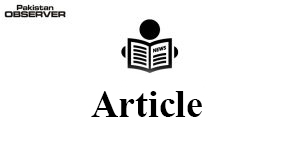Nimra Akram
In the Islamic Republic of Pakistan, story of education is a nightmare. The data on Federal Education and Professional Training Pakistan speaks for itself: almost 40% of children are out of school. It is believed that youth fuels modernization and economic growth of country. We have failed to amalgamate youngsters into education system. In consequences, they ended up choosing labour market which in turn created multiple adverse impacts such as inequality, unemployment, population growth and discrimination. It is shockingly unbelievable that Pakistan recently stands with the second highest number of out of the school children, according to UNICEF.
For the roughly 22 million children not attending school, 11 million not achieving formal education as well as attendance averages 60%. Sindh and Balochistan signify the worst scenario. Gender comparison display boys higher number than girls at every stage of education. Pakistan literacy rates hang at 60%, increased by 2% from 2014 and horrifically missing Global Goals of 88%. Literacy consistently lags behind: 50% of class 5 students cannot read a simple Urdu story meant for class 1. A worrisome list of other catastrophic concerns on education level and quality, corruption, infrastructure and more has been left out for the purposes of minimizing reader hopelessness. However, problems abound; desultory analysis reveals prospective and potential for simple outcomes.
Pakistan follows predominantly two systems of education: traditional religion based education system and modern formal education system. The reasons behind the educational problems are lack of tolerance and awareness. The lowest budget has been spent on the system of education since decades which has weakened the foundation of the quality of the system. Hence, it has failed to raise the nation as socially, economically and politically.
Educational policies change with political situations which mark an adverse impact on individuals. The great philosopher Iqbal wanted Pakistan’s education system to be based on uniformity. Different systems are working over here simultaneously as well as the curriculum is not uniformed. Nations develop their generation on the basis of vigorous training and education on social, economic and politics. The weak and directionless education system of Pakistan has not been able to guide its people on social grounds. Furthermore, it lacks cohesion that promotes a situation of deprivation among masses. And, this is the reason for cultural and political unrest in the communities.
Students have been facing incredible loss of identity and stress when they are forced to learn a foreign language. English has become an educational language and every subject is taught in it. On the other hand, Urdu is the national language which has been taught in schools and has been speaking by nationals. More than 30 local languages are spoken by people over here. Hence, a lot of nationals cannot communicate in Urdu or English. In consequences, they ended up learning languages rather than getting knowledge which creates communication gaps among people. It creates mental health problems as well. Extensive educational reforms are required to enhance the system; otherwise it would be completely the wastage.
Private institutions should collaborate with govt sectors to improve public schools and provide quality context to students. As education system in Pakistan is in a shambles, reforms are certainly required to bring unity amid individuals. Muslim-majority state, mixed system of education, more than 50% of literacy rate, big socio-economic concern, and political unrest can be resolved with one single improvement, and that is to provide basic quality education to individuals of this state.
—The writer is contributing columnist, based in Karachi.










